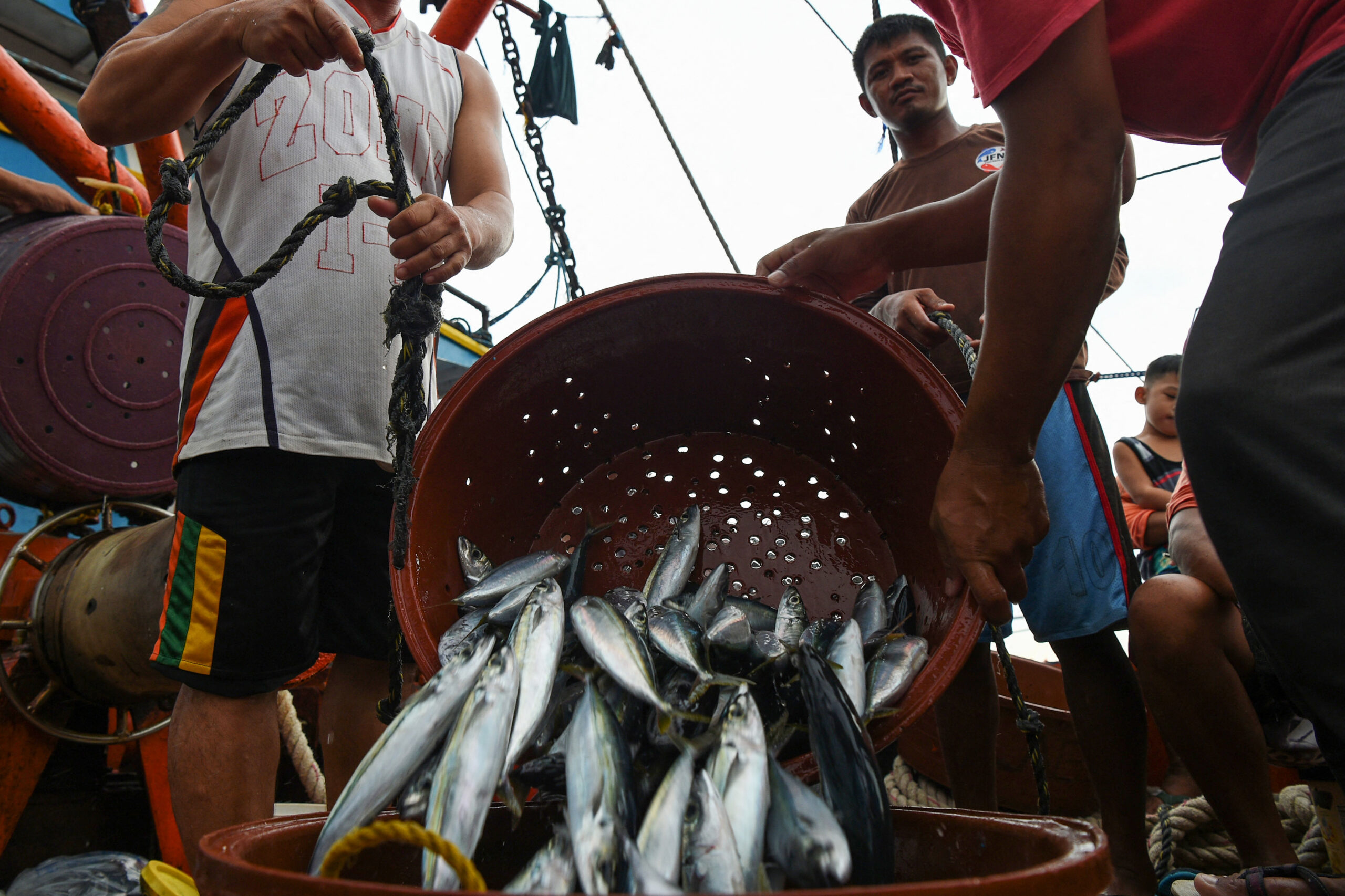
This photo taken on July 5, 2022 shows workers filling containers with a fishing boat’s catch at a port in Masinloc town, Zambales province, after an expedition in the West Philippine Sea. FILE PHOTO/Agence France-Presse
MANILA, Philippines – The Bureau of Fisheries and Aquatic Resources (BFAR) on Tuesday said it is exhausting all efforts following a decline in fish catch in the West Philippine Sea (WPS) from January to June.
The Philippine Statistics Authority (PSA) reported that for the first half of 2024, fish catch in the WPS was down to 101,039.54 metric tons (MT) from 108,392.48 MT for the same period in 2023.
“The government has exhausted all necessary efforts to address the issues and particularly sa BFAR may ganito man tayong situation, hindi kami titigil para magpatupad ng mga programa na makatutulong po sa ating mga mangingisda (in BFAR, even if we have this situation, we will not cease to implement programs that are beneficial for fishers),” BFAR Spokesperson Nazario Briguera said in a phone interview.
READ: Chinese warship shoots laser at BFAR aircraft
Briguera said there are several factors contributing to the decline in fish catch, including geopolitical conflict in the region, rising global fuel prices, and the El Niño phenomenon and climate change which affected the migratory movement of fish, among others.
Article continues after this advertisement
“We don’t ignore this fact na nag-decline ang contribution ng West Philippine Sea sa overall production ng ating (the declining contribution of the WPS in the overall production of our) national production, we’re taking this seriously,” he said.
Article continues after this advertisement
The BFAR official cited the implementation of several programs including its national banner program Livelihood Activities to Enhance Fisheries Yields and Economic Gains from the West Philippine Sea (LAYAG WPS), fuel subsidy distribution, and other “comprehensive” strategies in capacitating Filipino fisherfolk and their families.
READ: West PH Sea: China Coast Guard ship rams BFAR vessel near Escoda Shoal
The BFAR also allocated around PHP1.5 billion worth of funds for the procurement of more floating vessels for multi-mission purposes.
“Bahagi naman talaga ito ng direksyon na tinatahak ng (This is really part of the direction of the) Bureau of Fisheries and Aquatic Resources as far as improving our capacity in terms of monitoring, control, and surveillance,” Briguera said.
At least 315,000 fishers in regions adjacent to the WPS, including the Ilocos Region, Central Luzon, and Mimaropa, are benefiting from the WPS.
Meanwhile, Briguera said the decline in the WPS catch has not affected the overall fish supply and prices in local markets, considering other sources like aquaculture.
“Naging sufficient naman ang supply dito sa Metro Manila at hindi naman ito nakaapekto sa presyo taking into account na ang ating bansa ay maraming pangisdaan (The supply in Metro Manila has been sufficient and it did not affect the pricing, taking into account that there are many fishing grounds in the country),” he said.
Briguera also assured that the closed fishing season from Nov. 1 to Jan. 1 will not affect the holiday stocks and the BFAR will continue to conduct stringent price monitoring in local markets.
For comprehensive coverage, in-depth analysis, visit our special page for West Philippine Sea updates. Stay informed with articles, videos, and expert opinions.



































